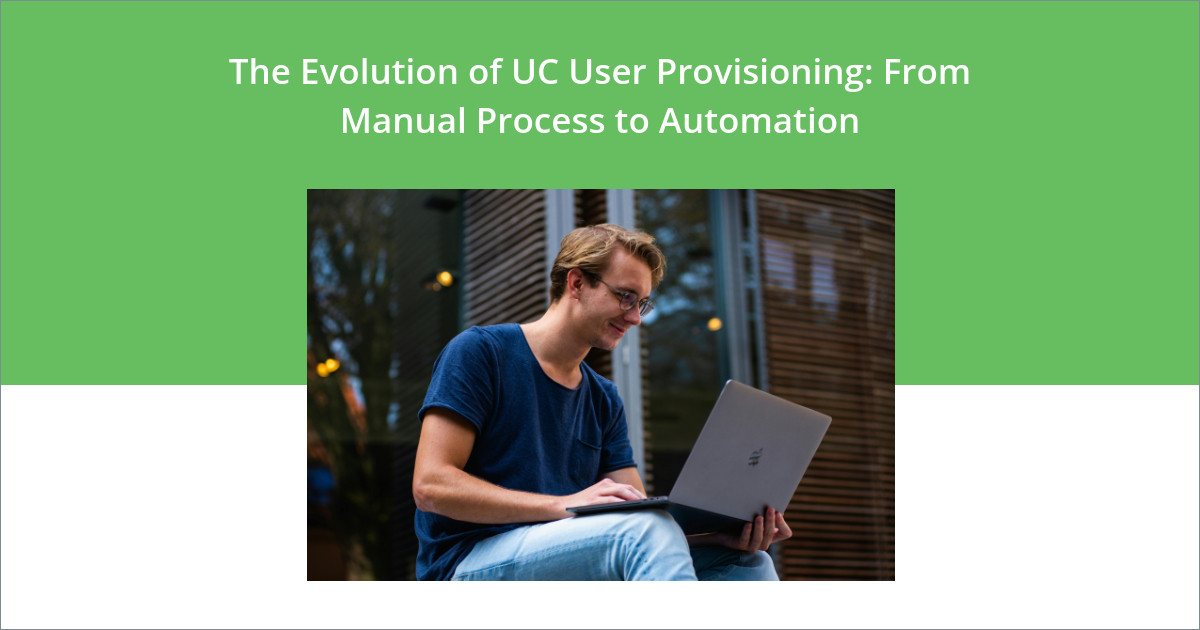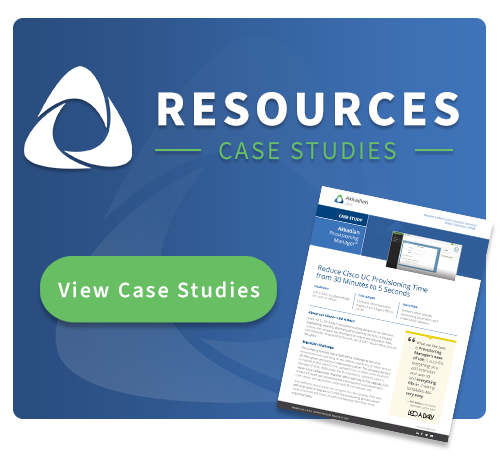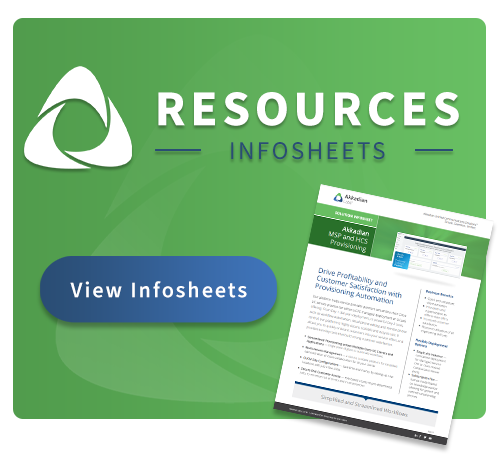UC user provisioning has evolved from simple manual setups to sophisticated automation that can configure entire communication ecosystems in minutes. This shift is driven by fundamental changes in the way we work—changes that have made manual provisioning inadequate for modern organizations.
To understand why this transformation was necessary, we need to look at what changed. The transition from in-office to hybrid work reshaped how organizations manage communication infrastructure. Companies that stuck with manual provisioning quickly discovered that systems built for centralized environments couldn’t meet the complexity, speed, and security demands of a distributed workforce.
This evolution is ongoing. As UC user provisioning platforms become more integrated with core business operations and security requirements grow stricter, manual provisioning continues to fall short. Organizations relying on outdated methods find themselves constrained by processes that no longer align with operational realities.
When Manual Processes Were Sufficient
Manual provisioning wasn’t always inadequate. Through the 2010s, it worked in traditional office environments where demands were straightforward. Systems only needed basic setup, like phone extensions, voicemail configuration, and directory entries. IT administrators handled these tasks during business hours with a one- to two-day turnaround.
This approach matched how organizations functioned. There were fewer remote workers, simpler tools, and IT departments that could handle provisioning without major delays. The process followed predictable steps: receive the request, configure the system, test connectivity, and update credentials.
That all changed in 2020. The rapid shift to remote work forced organizations to provision complex communication environments for distributed teams, often within hours. Manual processes that once sufficed became a constraint, slowing business continuity and limiting agility.
The Complexity That Changed Everything
Remote work exposed a gap between modern UC environments and outdated provisioning methods. Today, 44% of organizations deploy six to 10 unique communication platforms, while another 37% use between 11 and 20 platforms. Each platform comes with its own configuration, security policies, and integration requirements.
This complexity created provisioning scenarios that manual processes couldn’t handle. New employees needed immediate access to voice systems, video conferencing platforms, messaging applications, collaboration tools, and mobile synchronization. Manual configuration meant IT administrators spent 3-4 hours per user—time that new employees and businesses didn’t have to spare..
The result was a provisioning bottleneck that turned into a business liability. Many organizations reported onboarding delays of 4–7 days for full UC access. During that time, new employees relied on personal devices or unauthorized apps—introducing serious security risks.
How Security Requirements Eliminated Manual Viability
While growing complexity made manual provisioning difficult, rising security demands made it unviable. What were once acceptable trade-offs between speed and security became serious risks, especially as communication tools began handling increasingly sensitive business data.
READ MORE: 3 Biggest Risks of Manual UC Provisioning (and How to Use Automation to Fix Them)
Manual provisioning failed in three key areas:
Human Error and Inconsistent Implementation
Manual provisioning depends on human accuracy across highly complex systems. Misconfigurations can result in excessive permissions, unsecured accounts, or access gaps that expose sensitive communications. In fact, human error is responsible for nearly 95% of cybersecurity incidents, with misconfigured access controls ranking among the fastest-growing threats.
Under pressure to provision quickly, IT teams often take shortcuts, resulting in inconsistent security implementation. Some users receive the correct configurations; others get rushed, incomplete setups that create vulnerabilities across the entire UC environment.
READ MORE: Two Biggest Errors Caused by Manual UC User Provisioning (& Why They Happen)
Slow Access Revocation and Incomplete Audit Trails
Manual deprovisioning often lags behind employee offboarding, leaving former staff with lingering access to communication systems. Many organizations discover ex-employees still have access to critical systems weeks after leaving.
Worse, manual processes often lack reliable audit trails. When a security incident occurs, organizations struggle to retrace provisioning actions or pinpoint where vulnerabilities originated, putting them at risk of noncompliance and regulatory exposure.
Rise in Unauthorized Workarounds
When official provisioning is slow, employees often resort to unauthorized tools and services. These workarounds operate outside security controls, creating unmanaged entry points and undermining the entire security framework. In many cases, the delays caused by manual provisioning directly contribute to the spread of shadow IT.
How Automation Solved These Challenges
Faced with these mounting challenges, organizations turned to automated UC provisioning as the solution. The evolution happened in stages, each addressing the specific limitations that manual processes couldn’t overcome.
READ MORE: Manual vs. Automated UC Provisioning Infographic
Early automation focused on scripting repetitive tasks and using templates to accelerate basic setup. This reduced administrative burden while preserving familiar workflows. But as hybrid work scaled and expectations changed, automation matured.
Role-based provisioning eliminated the need for manual permission configuration. UC platforms began integrating with HR systems, allowing automated workflows to trigger provisioning from employee onboarding events. Most importantly, security controls became built-in, no longer separate steps that could be skipped, rushed, or misconfigured.
Today’s automated provisioning systems can instantly configure entire UC environments, apply consistent security settings, and scale seamlessly as organizations grow. The differences between manual and automated provisioning are stark:
Speed & Accuracy
Manual provisioning takes hours or days to configure users across multiple UC platforms. Automated systems complete the same processes in minutes, accelerating productivity and eliminating delays.
Manual setup invites human error, like missed steps, misconfigurations, or inconsistent permissions. Automated systems apply configurations reliably and consistently, reducing the risk of vulnerabilities and ensuring users have exactly the access they need.
Security & Scalability
Manual provisioning scales linearly with IT resources—more users require more time and staff. Automated systems scale exponentially, handling spikes in demand without any added administrative overhead or compromised security.
Manual workflows lead to IT teams treating security as a separate task, often skipped under pressure. Automation embeds security into every step, maintaining compliance while meeting the pace of business.
Compliance & Adaptability
Automated systems adapt quickly to new UC tools, evolving business needs, or shifting regulatory requirements. They generate complete audit trails that log every action—provisioning, permission changes, and revocations—allowing organizations to demonstrate compliance and uncover optimization opportunities that manual processes simply miss.
Conclusion
The shift from manual to automated UC provisioning isn’t just operational—it’s strategic. As UC platforms grow more complex and hybrid work becomes the norm, organizations can no longer rely on slow, error-prone processes.
Automation enables faster onboarding, consistent security, and seamless scalability. It empowers IT teams to support growth without adding risk and positions the business to adopt new technologies without disruption. In contrast, manual provisioning creates delays, increases vulnerabilities, and limits agility.
This evolution is already underway. Organizations that embrace automated provisioning now are laying the foundation for future innovation and resilience. Those that continue to rely on manual processes risk being left behind, constrained by inefficiencies and exposed to growing security threats.
Don’t let legacy processes hold your organization back. Automated UC provisioning delivers the speed, control, and confidence needed to stay secure and scalable in a fast-moving world. Schedule a demo to see how Akkadian Labs’ provisioning platform helps you meet compliance standards, eliminate bottlenecks, and drive operational efficiency.



